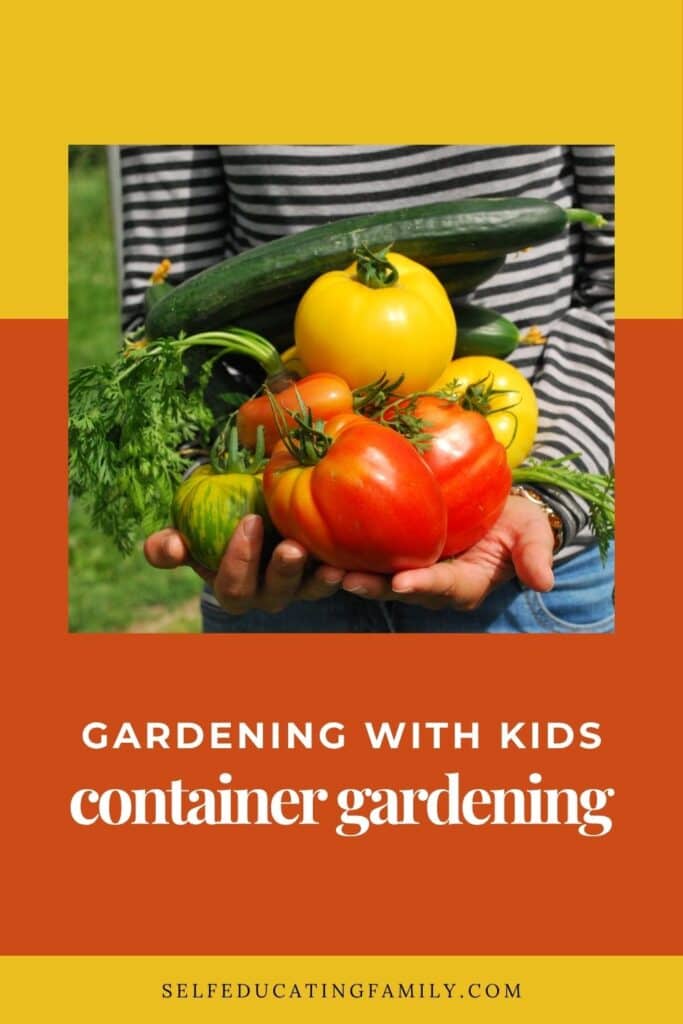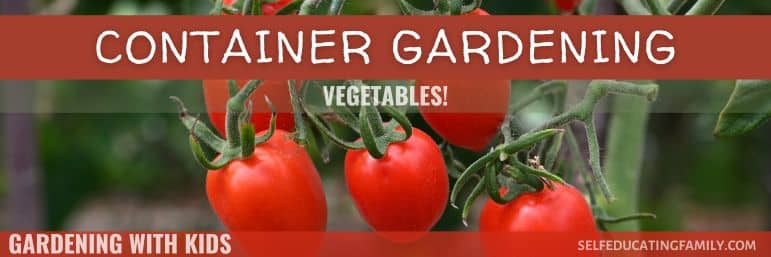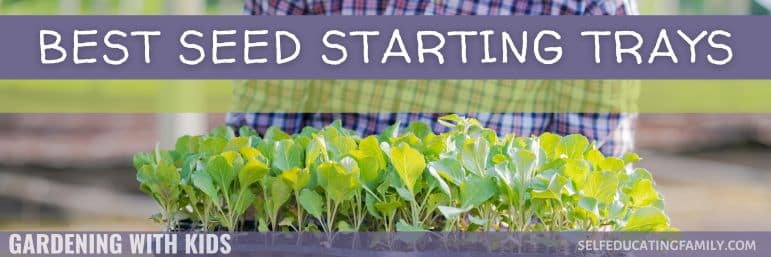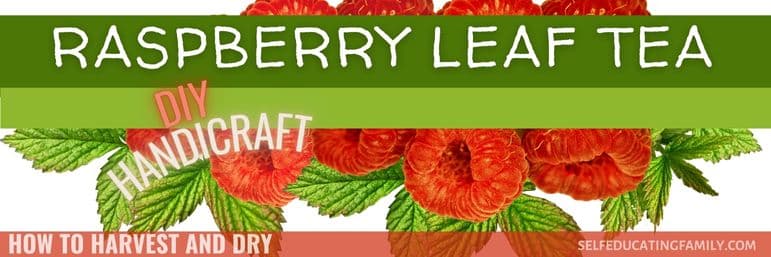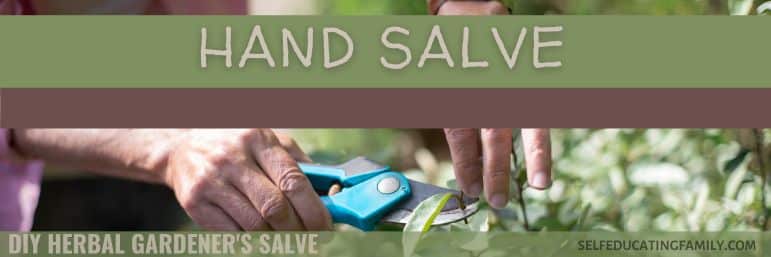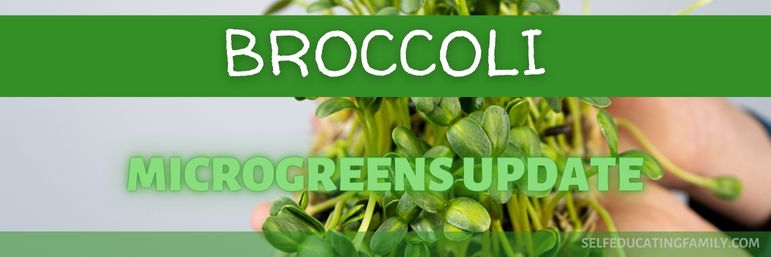What’s Inside: Today, we look at container gardening, especially for vegetables. Have you thought is was more trouble than it was worth? Let’s see how to make this work with kids, using observations from this summers fiascos and successes.
This post may contain affiliate links. If you find my content valuable and make a purchase through one of my links, I will earn a commission at no cost to you, which helps me keep this blog going so I can help you even more! I recommend products I trust and/or use myself, and all opinions I express are my own. Read the full disclaimer here.
Why Container Gardening with Kids?
To be honest, I follow a fabulous gardening teacher, Lynn Gillespie at the Living Farm. She has a free video series that tells you what to do each week of the growing season. And she’s been doing it for 10 years. You can get all of her information for free at her website: The Living Farm.
She’s on a mission to help as many people as possible learn to grow their own food. Regardless of where you live, you probably can learn to grow something that you can eat.
So I wholeheartedly support her (and no, I’m not an affiliate of hers – I’m a student!)
This year she changed it up and is teaching how to do container gardens.
So we wanted to learn that, and this post will show you where we are so far.
First, Background
I’ve been gardening for 30 years. But that doesn’t really say much. My first garden, we had a postage-stamp-sized yard, so I learned to grow expensive things, or things that were just so much better if you grew them yourself. Namely, herbs and tomatoes. I think I can say, I do pretty well with herbs now. And OK with tomatoes after all these years, but I still learn something each year.
I’ve never had a “real” garden with large area and neat rows of veges. I’ve always had to hide the garden in the front yard, or learn to grow things in a biointensive manner because of space issues. Square foot gardening was helpful when my guys were little – it’s one of the easier ways to divide a garden and make sure everyone has their own space.
But for the past 10 years, I’m working in semi-arid conditions and clay soils. Water and soil are my biggest challenges. This year, potato bugs (a.k.a. pill bugs or “roly-poly”s seem to be the nemesis).
We’ve had to do raised beds AND double-dig with amendments into the clay also.
I was ready for some containers.
Where do you get containers?
First, if you’ve been gardening, you start to acquire containers.
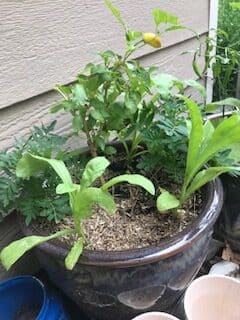
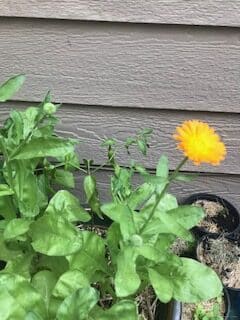
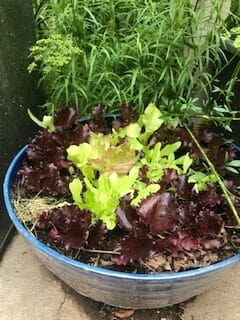
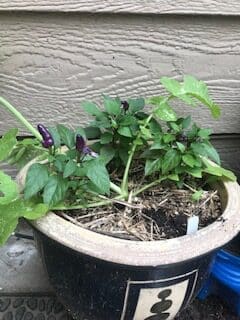
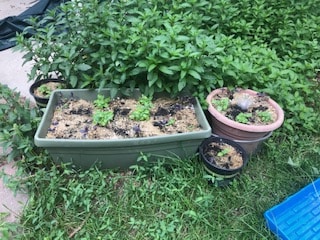
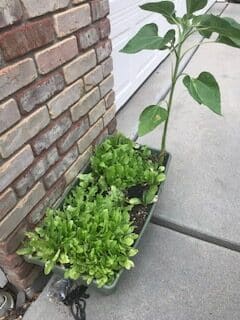
It’s not a bad practice to treat yourself to one exceptional container each year if you are going to container garden. Early on, I got my first Earth Box – these things work pretty well. They are “self-watering”with a water reservoir at the bottom. I picked up more as time passed, sometimes as gifts (put one on your wish list and then make sure someone knows where your wish list is!) I have five now.
What’s nice about Earth Box is their educational information. They tell you exactly how many plants to put in the container. And how to fertilize and mulch. Like this article on Mistakes to avoid when container gardening with vegetables. I think I make all of these mistakes.
Mistakes?
I must say, my mistakes probably come when I stray from the official recommendations. But I can’t help myself – I have a hard time planting only 2 tomatoes in one box. I have to throw some basil and marigolds in there too. The boxes just look better that way!
This year’s boxes have lots of interesting plants. I grow organic and heirloom varieties. So I attract a lot of wildlife, too – some good, some bad!
Here’s a run down of what’s in my big containers.
HINT: Use containers that are big. They work better usually.
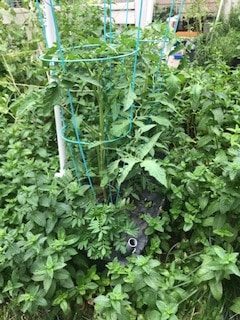
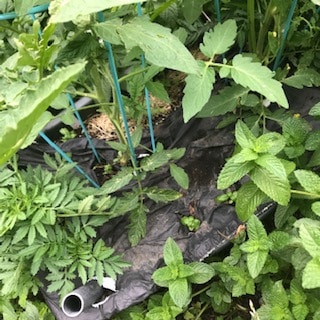

Box 1
In Earth Box 1, I have used the same mulch cover since I got the box. It has a lot of little holes in it, but that’s ok. 3 summers ago, I planted a marigold and then forgot to clean up the box in the fall, so last year I had the most amazing and strong marigold volunteers covering the box. I transplanted them all over. They also reseed now in Boxes 2 and 4, and a few places in my regular raised beds, and some between the pavers in my patio, unfortunately!
This year’s Box 1 has 2 Tomato plants, some marigolds, and a few little basils (little now! We’ll see about later!)
The biggest problem with Box 1 is that somewhere along the way, I lost the water feed tube and so I substituted a vacuum cleaner tube that is a little narrower, so the soil started building up and blocking off the tube – I don’t think I have a clean exit to the water chamber. But I don’t want to dig it all up to fix it because of the gorgeous, self-seeding marigolds.
So I just kind of “refresh” the soil by adding compost and fertilizer when I change out the plants. It seems to be working. The tomatoes took off when they hit the box.
Box 2
Earth Box 2 is another problem of volunteers – I somehow got sunflowers in it. I grew sunflowers one time 9 years ago in one of my raised beds and they got everywhere. But my dog likes to eat them. So I let some grow so he has a few leaves to munch on. Plus the amazing marigolds are in this box too. I scooped out half a dozen sunflowers and a few marigolds to transplant them. The sunflowers went into the chicken yard as an effort to “green up” their barren wasteland, because you know how chickens are. I think if I can get the sunflowers so large then the chickens can’t destroy them. I have them behind some chicken wire.
So I added 3 eggplants to Box 2. I love growing eggplants, but have yet to actually get a fruit bigger than 2 inches. But they are so pretty when they are flowering. I think my priorities get mixed up when I grow things! What I really need to do is to start eggplants WAY earlier inside or find some ridiculously short time-to-maturity variety. I had some red scarlet runner beans (nitrogen givers) in the box last year, so I thought the eggplants (heavy feeders) would get a good head start.
Box 3
Earth Box 3 is one of my vertical trellises. So I put cucumbers in there. I also have cukes in the two fabric 7 gallon containers next to the box. Very sunny area right against the house on the patio. I’m hoping for a big cucumber year.
In this box, I also planted a few extra things: marigolds, basil. I just found out basil can give cucumbers an unusual flavor if used as a companion. Well, gardening is part science as well as part handicraft, right? We’ll just have to see what happens.
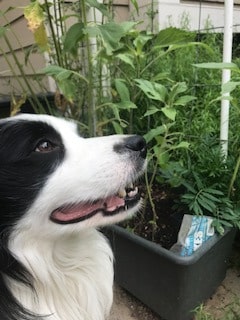
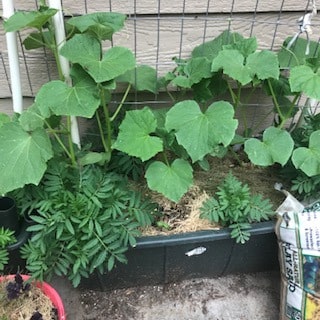
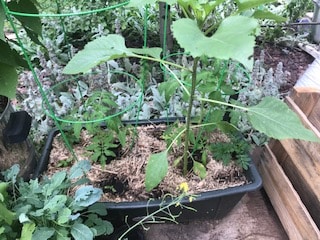
Box 4
Box 4 also has a trellis. I am sad to say, I was trying to get a melon to grow. I have to now find a short-season melon because it’s getting on in summer!
But it has a ton of really hardy volunteer marigolds. And some lovely volunteer purslane, which most people think of as a weed, but it has a nice flavor, is good in salads, and high in vitamin C.
Warning: Please get verification of what you eat before you eat it if it is a volunteer or “weed”!
Earth Box 5
Box 5 has two more tomatoes, a sunflower, several basils (opal & genovese), a calendula, and a marigold.
They are looking good so far.
Container size
This is getting lengthy, but I have other containers too. I picked up 10 free containers from craigslist from someone who was moving. These were all those big containers that small trees come in – between 7 to 15 gallons.
The point of these is that you want to have enough space if you are growing veges.
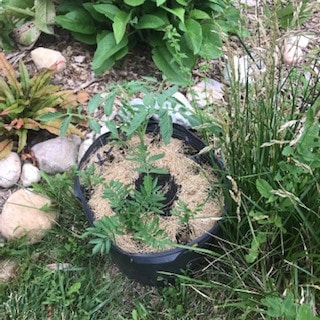
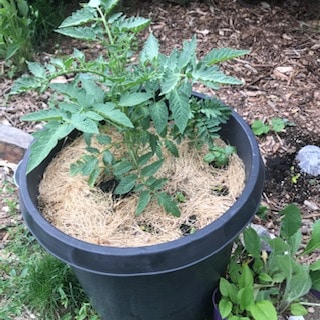
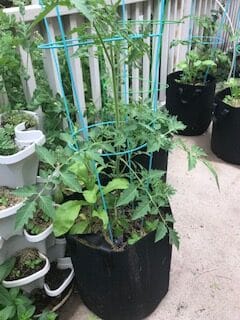
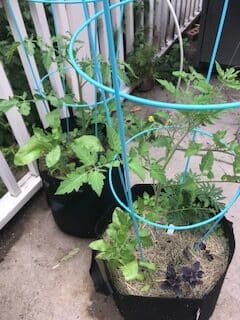
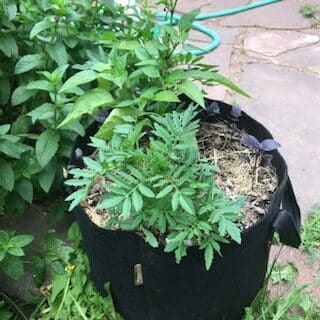
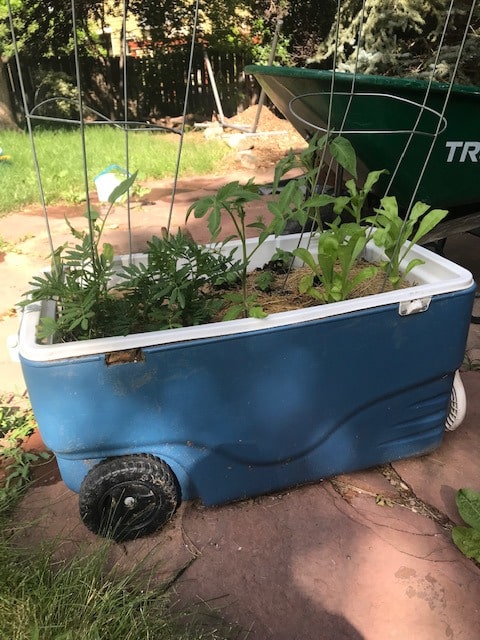
Lynn Gillespie of The Living Farm has a download of what is a good size for each type of plant. It has to do with root depth – lettuce roots are more shallow that tomatoes for instance, so they can handle a smaller container.
I’ve got tomatoes, carrots, basil, greens, peas, turnips, broccoli, peppers, potatoes, eggplant – all kinds of veges in these containers. Incidentally, most of my overwintered peppers this year failed right at spring time before planting. I only had 7 that made it. Perhaps I need to pay more attention to them when they come out of dormancy.
Fabric containers
I also have 7 gallon and 10 gallon fabric planting bags from Bootstrap Farmer. When I got the 7 gallon 10-pack a few years ago for tomatoes, I found out that was a bit small. I got the 10 gallon 10-pack last year. They are all holding up well and the 10 gallon is plenty big for my beefsteak tomato. Be sure to cage tomatoes when you plant them.

I even have one hay bale “container” for my squashes this year. So far, I think it doesn’t like being on the concrete patio – the water drains too quickly. I’m not sure I can move it now!
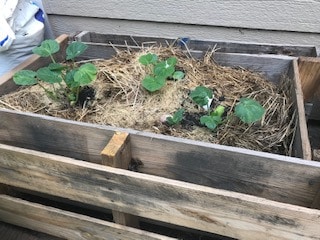
The hay bale was a huge experiment because I have the most difficulty growing the simplest things. I’m using the method from Old World Garden Farms. You know how EVERYONE grows zucchini and gets thousands of zucchinis? I get 2. Maybe. Usually something happens to it first. I can’t grow beans yet either. At least there’s always something to learn!
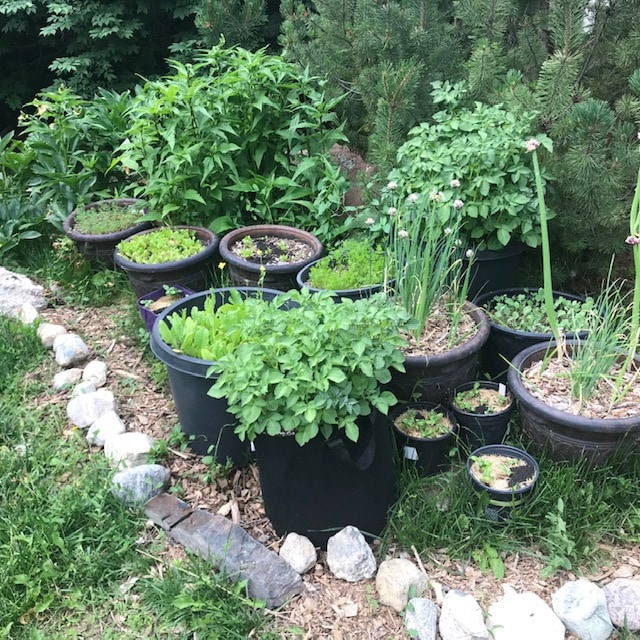
I’ll keep you posted on how it worked
I have enjoyed container gardening so far. It’s solved my problems of too much shade because I can put the containers where the sun is. And they actually look nice in my front yard, which is all sun. We’ll see if I can keep up with the watering.
